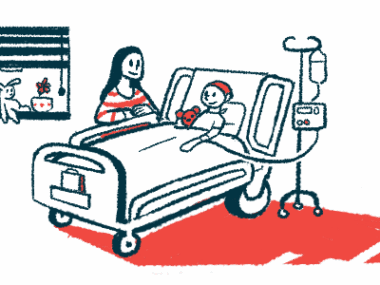Rare Dental Lesions Found in Young Girl with EDS
Written by |

A young girl diagnosed with Ehlers-Danlos syndrome (EDS) exhibited a rare case of so-called odontogenic keratocysts — benign cystic lesions characterized by aggressive growth — in her jaw, according to a case report.
The report highlights the importance of an interdisciplinary approach for diagnosis and treatment of such complex cases.
Titled “Multiple odontogenic keratocysts in Ehlers– Danlos syndrome: a rare case report,” the study was published in the journal BMC Oral Health.
The 11-year-old girl was admitted to a hospital in Poland in 2013 due to multiple lesions in the lower and upper jaw, as shown by an orthopantomogram (OPG), a panoramic dental X-ray scanning. At age 7, the girl had been diagnosed with classical EDS. Her father had also been diagnosed with EDS.
The girl had been hospitalized twice. The first time due to Sprengel’s deformity (when one of the shoulder blades is elevated) and scoliosis — a sideways curvature of the spine — and the second following eye problems.
Upon admission, physical examination revealed abnormally flexible joints and stretchy skin, among other alterations. The right side of the mandible was deformed and the girl’s teeth were displaced.
Based on her multiple odontogenic keratocysts, scoliosis, Sprengel’s deformity, increased distance between the eye’s orbits, and protrusion of the frontal bone (forehead), the girl was diagnosed with Gorlin–Goltz syndrome, an inherited condition.
Lesions were treated using enucleation, a method to remove affected tissue. Cysts and nearby teeth were removed, and bone was curetted (scraped). Analysis of removed tissue confirmed the presence of odontogenic keratocysts.
A second surgery was scheduled to remove the remaining lesions but the patient missed it, and the treatment was discontinued.
She was readmitted to the hospital in 2017 due to pain in the mandible and numbness of the right side of the chin. OPG revealed successful bone healing in treated areas.
The remaining lesions and involved teeth were removed in a second surgery, performed under general anesthesia. Post-operative healing was uneventful, and the girl was discharged the day after.
She underwent surgery at a different institution in 2019 and one year later was admitted back to the first hospital due to a mouth fistula (a pathway through which fluids from an infection drains), which developed in the lower left premolar tooth. Her medical record showed post-surgery paresthesia — a burn or prickling sensation — in the nerve supplying the lower teeth.
No signs of recurrence were found at this stage. A yearly follow-up for a minimum of five years was then planned.
“Simultaneous occurrence of EDS and odontogenic keratocyst is an extremely rare finding, being reported in the literature only twice,” the researchers wrote.
This case report adds to the current literature and highlights that “adolescents and their parents should be made aware of the importance of the condition and the treatment,” they added.
“Regular radiological examinations should be performed to detect possible recurrence. In the meantime, interdisciplinary approach is required for diagnosis and to find the best therapeutic strategy in these complex genetic diseases,” the team concluded.





